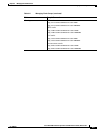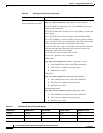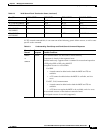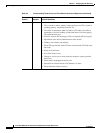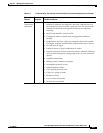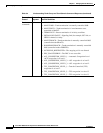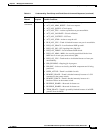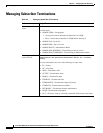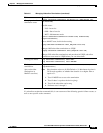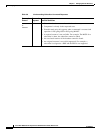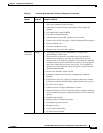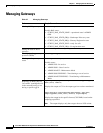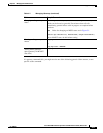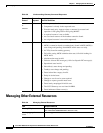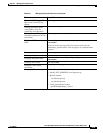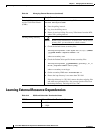
5-13
Cisco BTS 10200 Softswitch Operations and Maintenance Guide, Release 6.0.x
OL-16000-07
Chapter 5 Managing External Resources
Managing Subscriber Terminations
If a subscriber termination command fails, it can return one of the following generic failure reasons, as
well as ones specific to the command.
Changing subscriber
termination states
control subscriber-termination id=*@c3810_167; mode=forced; tar-
get-state=INS;
Possible states:
• INS—In-service
• OOS—Out of service
• MNT—Maintenance mode
control subscriber-termination id=sub2-ctx2; mode=forced;
target-state=maint;
Forces MAINT state, do this before testing
equip subscriber-termination id=97_8@ipclab.cisco.com;
Changes OOS subscriber terminations to UEQP
unequip subscriber-termination id=97_8@ipclab.cisco.com;
Changes INS subscriber terminations and puts them in UEQP, subscriber
terminations state must be UEQP before you can delete them.
Viewing test menus
diag subscriber-termination; test=<TAB>
diag subscriber-termination; test=<RETURN>
Testing subscriber
terminations
(place subscriber
terminations in
MAINT state first)
diag subscriber-termination id=sub-ubr3-1@cisco.com; test=3;
ring-duration=10;
Note Ring-duration values are 0–999 (Default = 5). Maximum ring time is
30 seconds regardless of whether the duration is set higher than or
equal to 31.
1. Tests if MGCP has access to the termination
2. Tests if there is a path to the device (ping)
3. Tests if the subscriber can be rung
4. Performs tests 1 through 3
Table 5-5 Managing Subscriber Terminations (continued)
Task Sample Command



